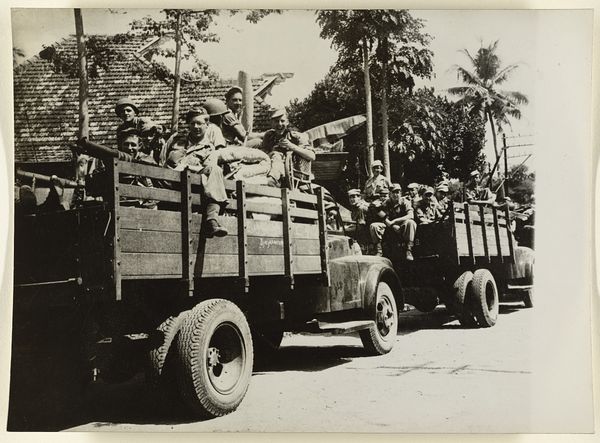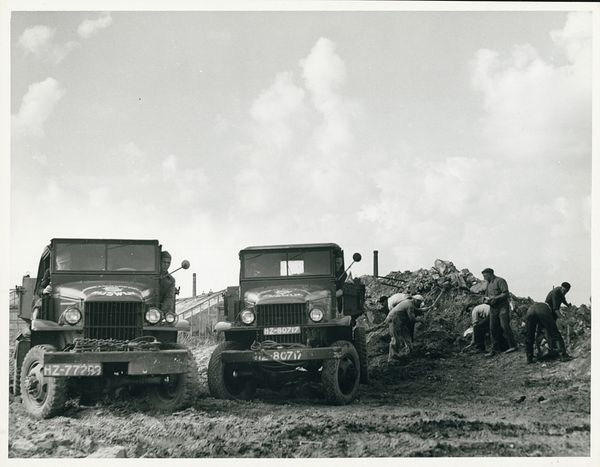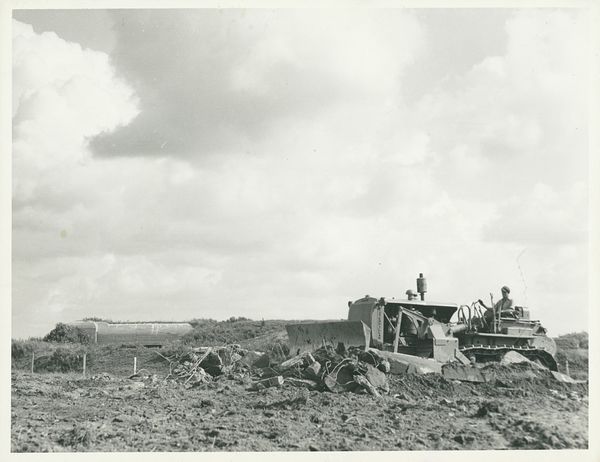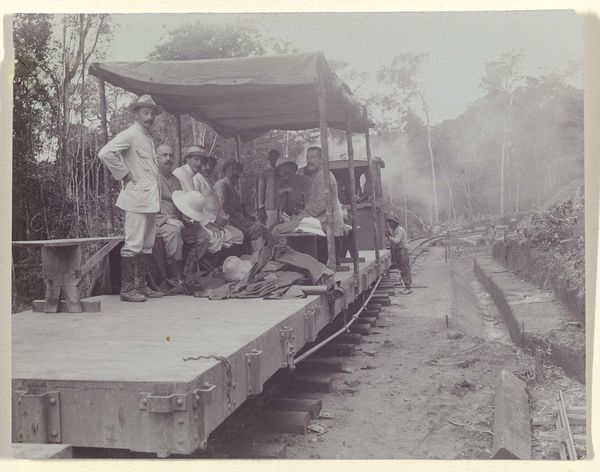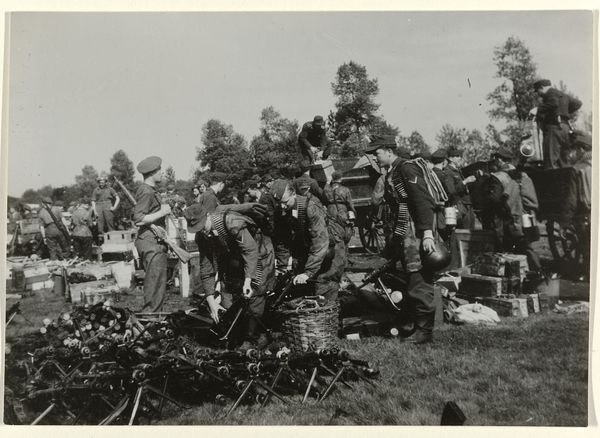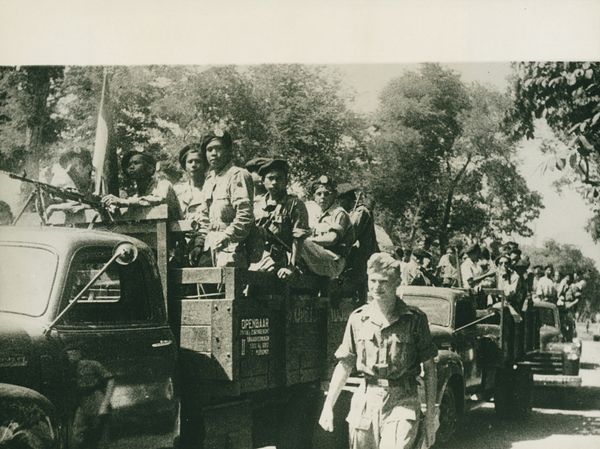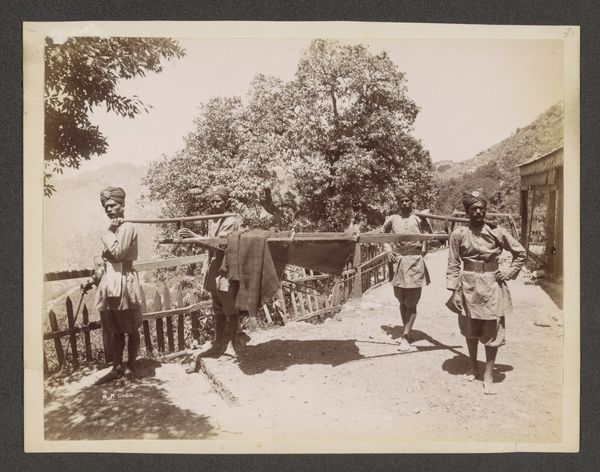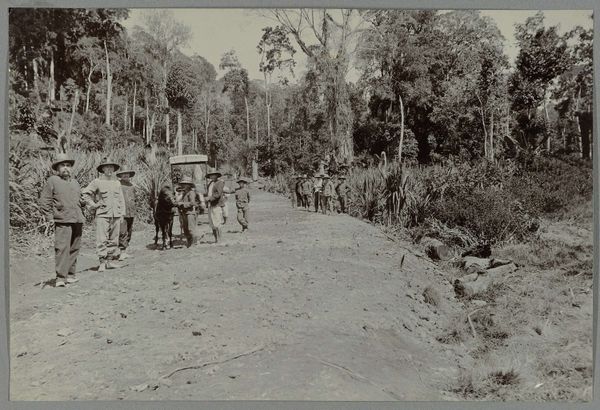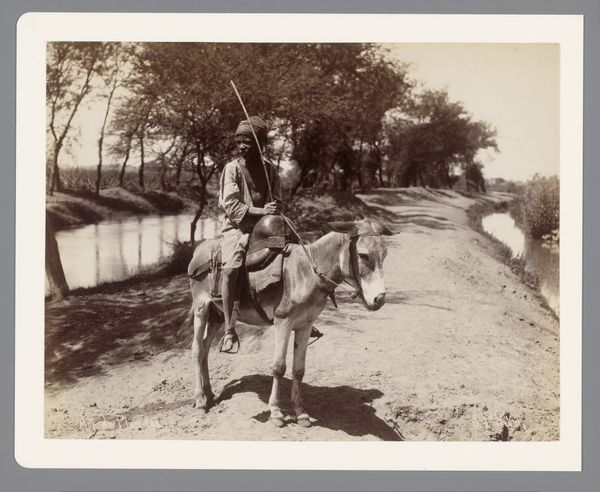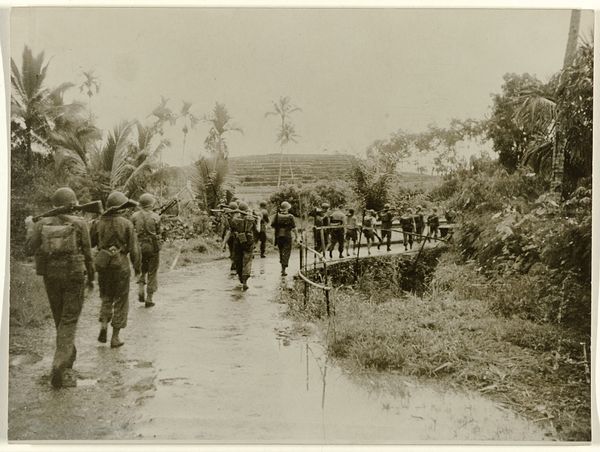
photography, gelatin-silver-print
#
landscape
#
street-photography
#
photography
#
photojournalism
#
gelatin-silver-print
#
monochrome photography
#
realism
#
monochrome
Dimensions: height 18 cm, width 24 cm
Copyright: Rijks Museum: Open Domain
Curator: The work we are looking at is titled "Verkenningsafdeling," tentatively dated to 1947. It’s attributed to De Spaarnestad Ltd. and presented as a gelatin-silver print. Editor: It's incredibly evocative, a monochromatic image almost consumed by a cloud of dust. The texture alone – gritty, almost tactile – sets a tense scene. What’s the vehicle, a truck of some sort? Curator: More like an armored reconnaissance vehicle, the photograph clearly places it within a context of conflict or military patrol. You feel the urgency of its passage down a rural road. Given the date, it likely connects to postwar colonial tensions in the Dutch East Indies, modern-day Indonesia. The image was made by Spaarnestad as photojournalism. Editor: Yes, and there’s something about the composition. The way the trees arch overhead, almost claustrophobic, framing the dust cloud, suggests a visual strategy that emphasizes containment. The focus on tonal gradation over form emphasizes diffusion rather than definition. The image obscures as much as it reveals. Curator: Exactly. Consider the Dutch public’s perception at the time. Wartime occupation was fresh in mind. So how did seeing this image of Dutch troops on maneuvers abroad shape understandings of national identity and postwar responsibilities? Editor: Did the intended public internalize it with pride, fear, or anxiety? The soft, almost indistinct quality mutes any potential celebration, turning it instead towards somber reflection. It is worth remarking upon that diffusion again: the truck has disappeared within the fog of war. Curator: Or the fog of imposed colonial will. How were such images weaponized? These details allow us insight into both overt propaganda efforts and quieter acts of subtle persuasion during complex socio-political conditions. It speaks volumes about the period’s complicated politics. Editor: A powerful interplay of light, shadow, and subject matter – creating an atmosphere as thick and layered as the historical forces that shaped its creation. It asks us to engage critically, and challenges traditional narratives. Curator: I agree. It leaves us with much to reflect on, especially around representation of conflict.
Comments
No comments
Be the first to comment and join the conversation on the ultimate creative platform.

